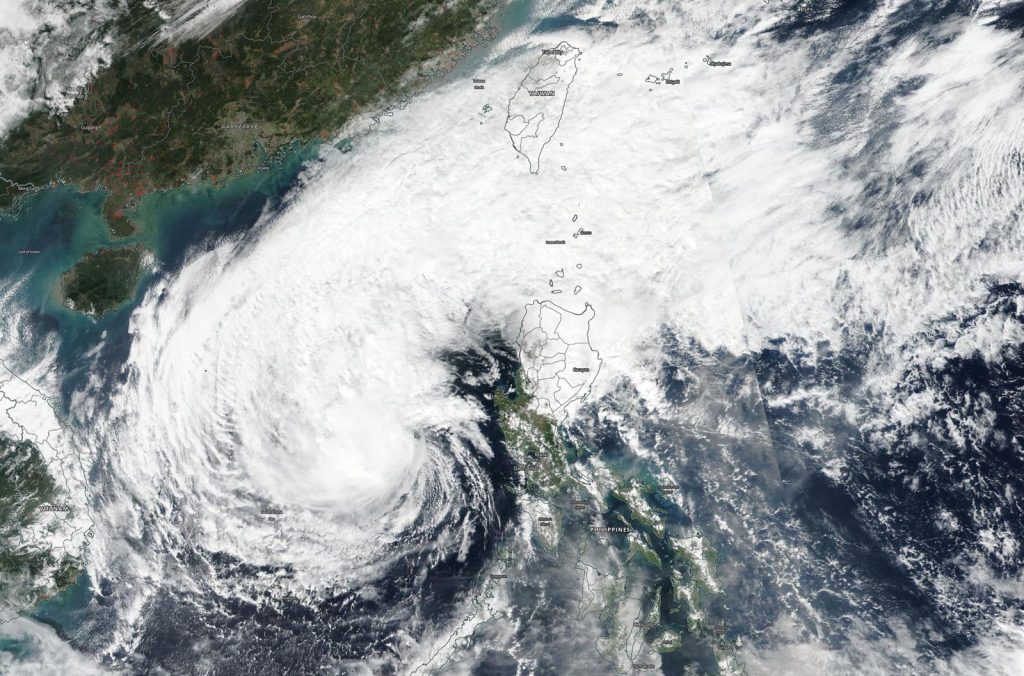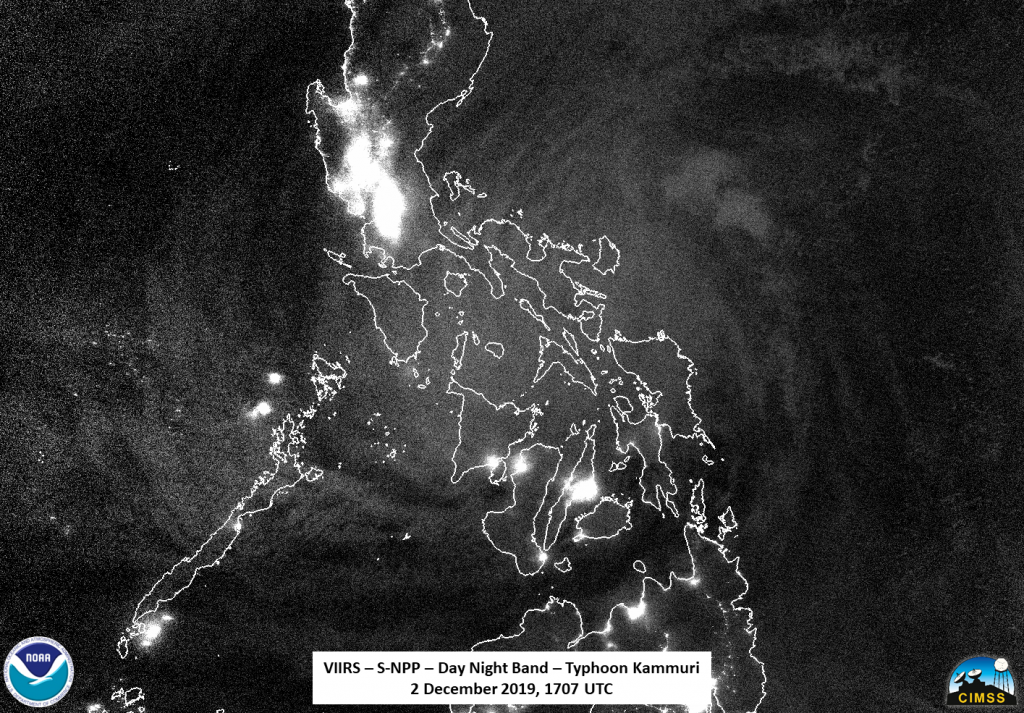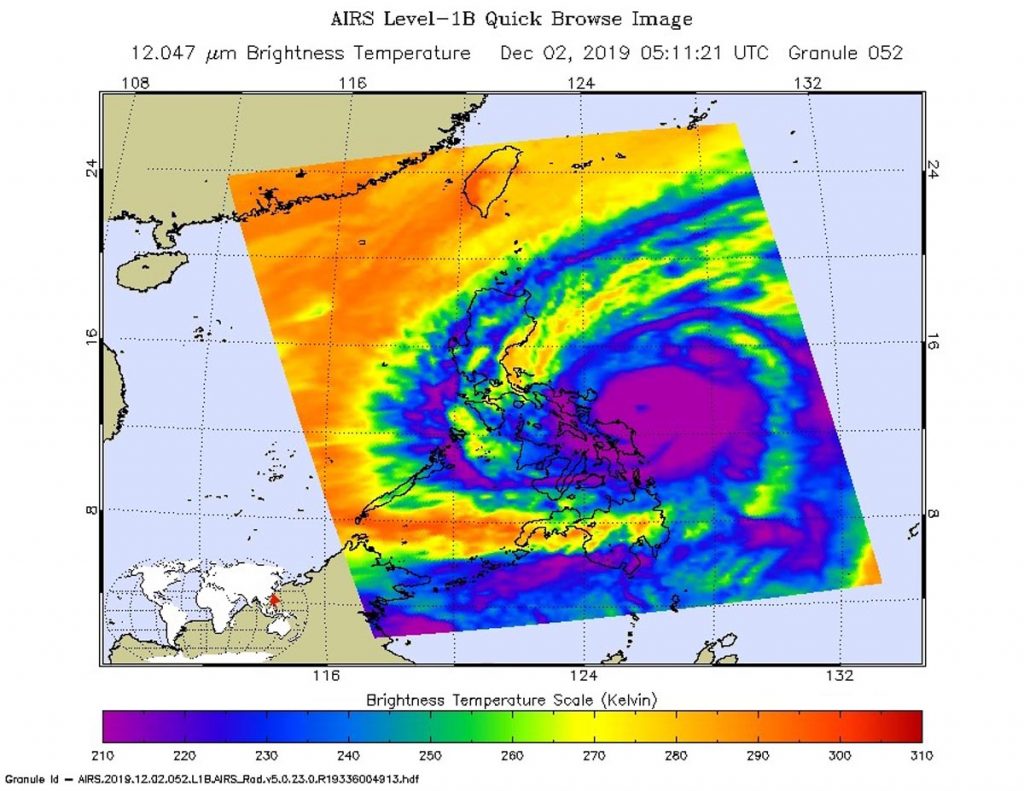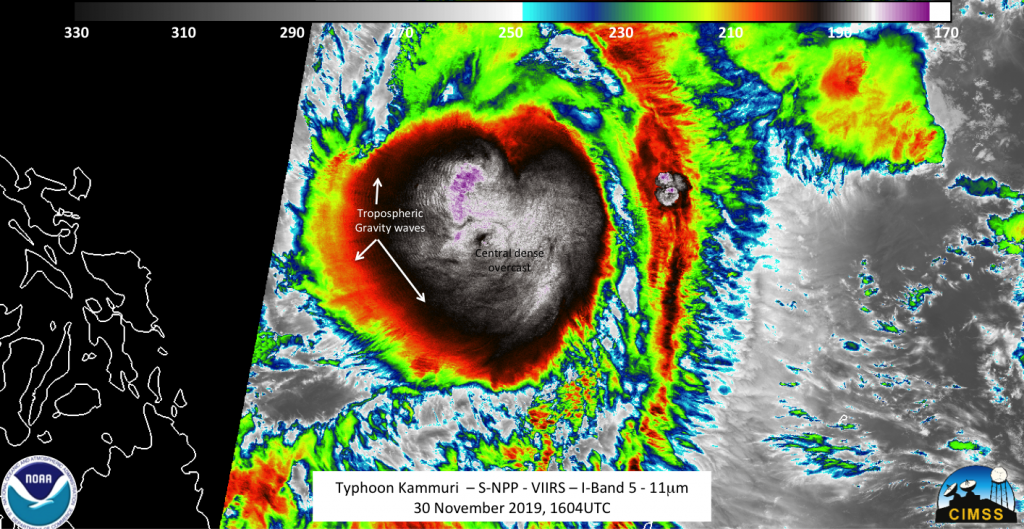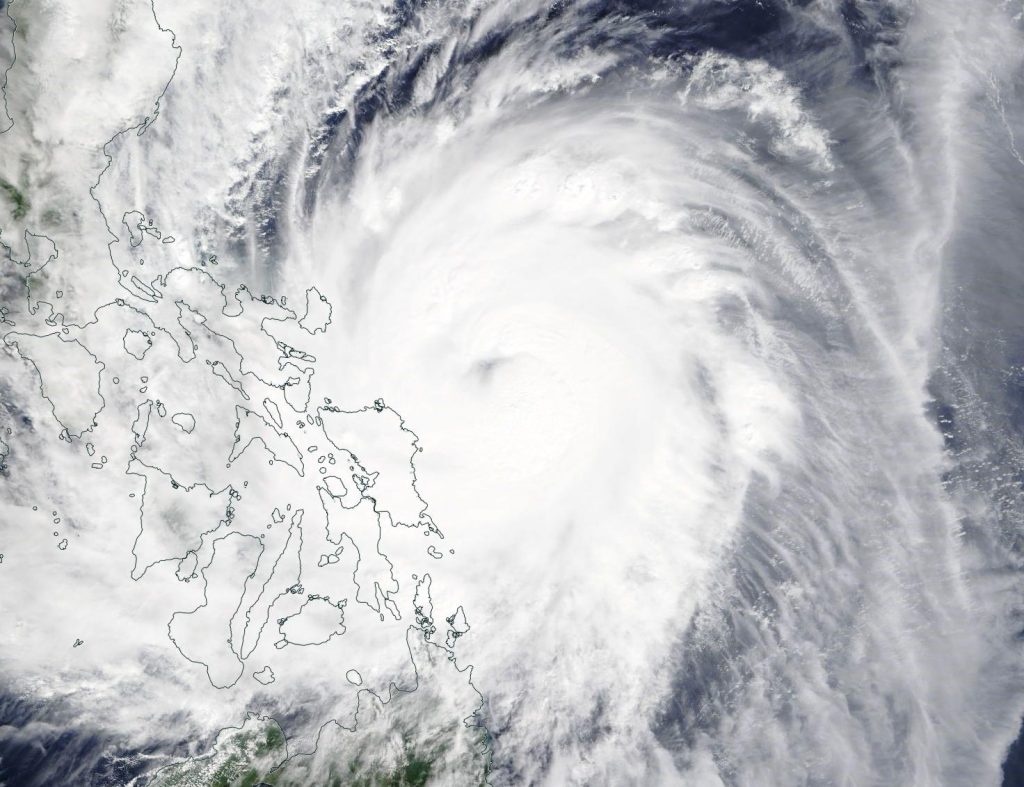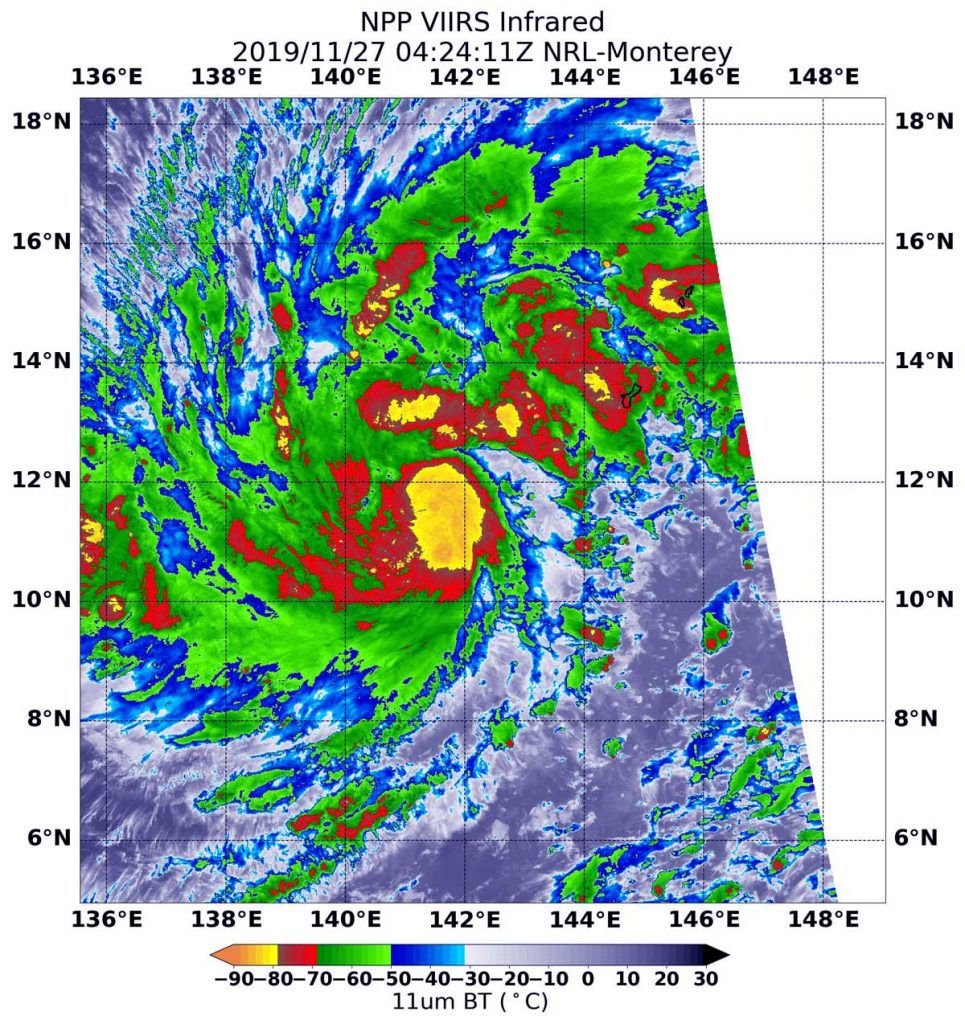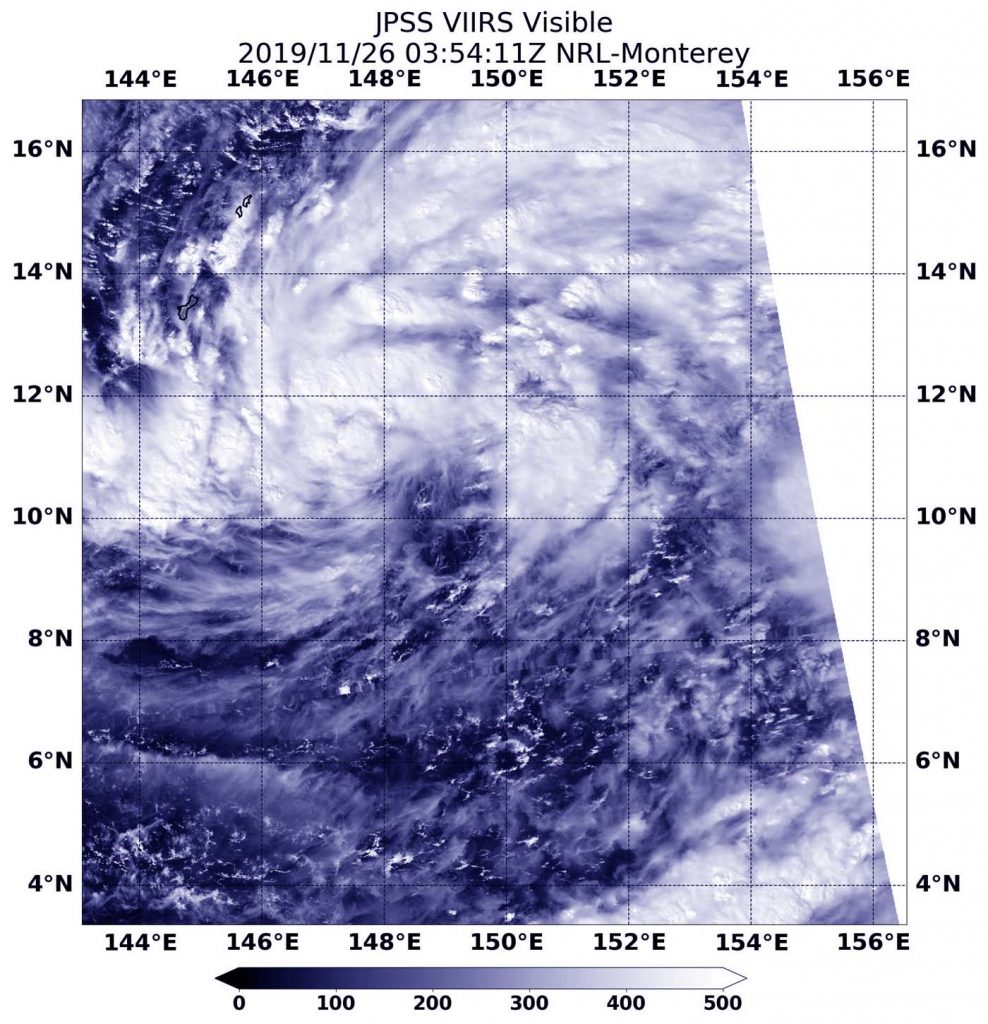Dec. 05, 2019 – NASA Analyzes Kammuri’s Heavy Rainfall
NASA provided analyses of Typhoon Kammuri’s heavy rainfall on its track through the Northwestern Pacific Ocean using the Global Precipitation Measurement mission or GPM core satellite.

While the Atlantic hurricane season officially ended on November 30, Typhoon Kammuri (known as Tisoy in the Philippines), which recently struck the central Philippines as a powerful Category 4 typhoon, is a reminder that the Pacific typhoon season is not yet over. In fact, while typhoon season does peak from around June through November, similar to the Atlantic, typhoons can occur throughout the year in the Pacific.
History of Kammuri
Kammuri first formed into a tropical depression from an area of low pressure on the 25th of November north of Micronesia in the west central Pacific about 500 miles southeast of Guam. Kammuri intensified slowly and was still a tropical storm when the center passed about 130 miles south of Guam on the evening of Dec. 26. As the storm made its way through the eastern and central Philippine Sea over the next few days it was kept in check at times by moderate wind shear and hovered around typhoon intensity.
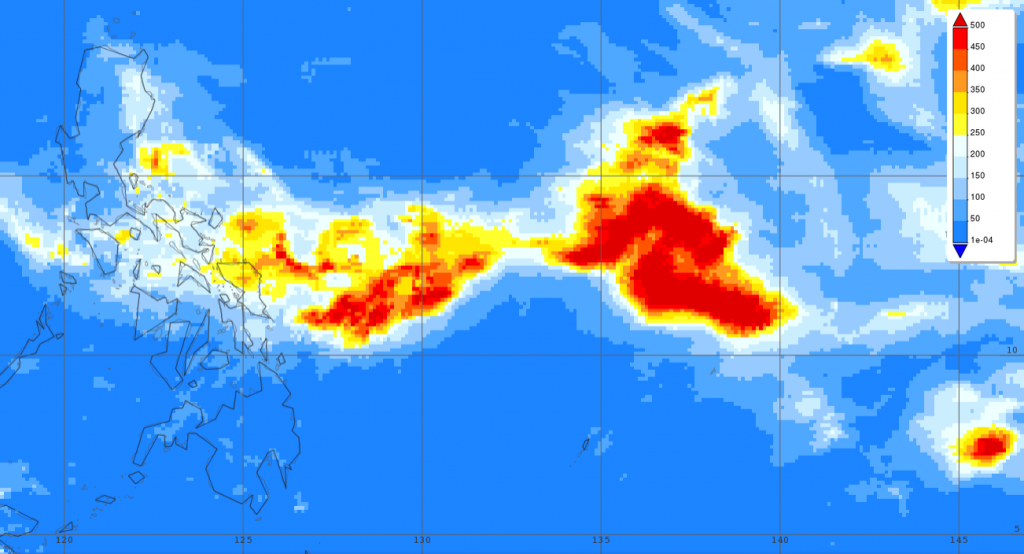
Analyzing Kammuri’s Rainfall from Space
During this period, the GPM core satellite overflew the storm. The first image was taken at on Nov. 29, 2019 at 1:27 p.m. EST (18:27 UTC/Nov. 30, 2019 at 3:27 a.m. local Palau Time, PWT) and shows surface rain rates within Kammuri from the GPM Dual-polarization Radar (DPR) when the storm was about 800 miles east of the Philippines. At the time, Kammuri was a Category 1 typhoon with sustained winds estimated at 85 mph by the Joint Typhoon Warning Center (JTWC).
GPM, a satellite managed by both NASA and the Japan Aerospace Exploration Agency, showed areas of moderate to heavy rain organized into loose bands rotating around the northern and western side of the storm. The eye, which is located along the right side of the image, was identifiable by the curvature in the inner rain bands, but the eyewall itself appeared rather weak. These features are consistent with Kammuri having a well-developed though not yet powerful circulation. That would change over the next few days as Kammuri began to approach the Philippines.
Initially, Kammuri weakened slightly after the time of the GPM overpass, but then on the evening of December 1 (local time), the storm began a rapid deepening cycle and intensified from a Category 1 typhoon with sustained winds estimated at 80 mph by JTWC at 12:00 UTC (7 a.m. EST/9:00 pm PWT) on the Dec. 1 to a Category 4 storm with sustained winds of 130 mph just 24 hours later. It was at this time that Kammuri made its first landfall in the Philippines around 11:00 p.m. local time near Gubat in the Bicol region in the Province of Sorsogon along the southeastern tip of Luzon.
As it continued on westward through the central Philippines, Kammuri weakened, crossing the island of Mindoro as a Category 2 storm before exiting the Philippines into the eastern South China Sea.
IMERG Finds Heavy Rains in the Philippines
In addition to its powerful winds, Kammuri brought heavy rains to the Philippines. IMERG, the Integrated Multi-satellitE Retrievals for GPM, is a unified satellite precipitation product produced by NASA to estimate surface precipitation over most of the globe. IMERG is managed at NASA’s Goddard Space Flight Center in Greenbelt, Md.
With IMERG, precipitation estimates from the GPM core satellite are used to calibrate precipitation estimates from microwave and infrared sensors on other satellites to produce half-hourly precipitation maps at 0.1o horizontal resolution.
IMERG surface rainfall accumulations for the period from Nov. 25 through Dec. 3 for the Philippines and the surrounding region from the time when Kammuri first became a tropical depression southeast of Guam until it had passed over Mindoro and into the South China Sea. The heaviest rains associated with Kammuri by far are off shore, especially over the central Philippine Sea where the cyclone stalled for a period producing rainfall totals well over 500 mm (~20 inches).
Over land, most of the central Philippines, including southern Luzon, received on the order of 150 mm or more (over 6 inches) with the highest amounts over the northern half of the island of Samar where rainfall totals are on the order of 250 to 350 mm (~10 to 14 inches).
So far, Kammuri is being blamed for up to 17 fatalities in the Philippines. After leaving the Philippines, Kammuri weakened significantly and is expected to weaken even further and dissipate as the cyclone is sheared apart and driven southward by the northeast monsoon.
Kammuri’s Status on Dec. 5
On Dec. 5 at 4 a.m. EST (0900 UTC), Tropical Storm Kammuri was in the South China Sea and was dealing with adverse atmospheric conditions, which were weakening the storm. It was centered near latitude 13.8 degrees north and longitude 113.7 degrees east, about 340 nautical miles east-southeast of Da Nang, Vietnam. Kammuri was moving to the southwest and had maximum sustained winds near 35 knots (40 mph/65 kph), making it a Category 1 tropical storm.
Kammuri continues to weaken and is expected to dissipate soon.
By Steve Lang
NASA’s Goddard Space Flight Center

